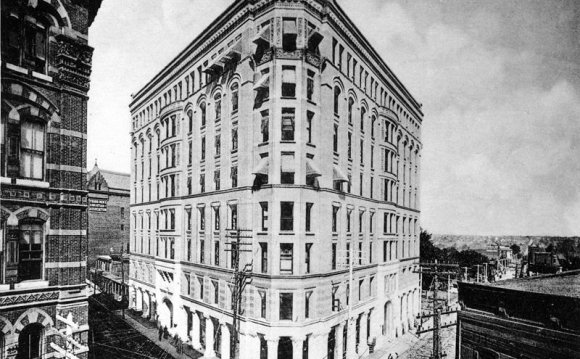
A common mental image of a "Victorian" home looks much like a dollhouse with elaborate trim and bright colors. But the term "Victorian architecture" actually refers to styles that emerged in the period between 1830 and 1910, during the reign of Queen Victoria. The Victorian era spawned several well-known styles, including Gothic revival, Italianate, Second Empire, Queen Anne, stick style, Romanesque style and shingle style.
The Victorian styles evolved largely from the imposing, elaborate Gothic style, which appealed to the romantic Victorian idea that fashion, architecture and furnishings should be beautiful rather than practical. A wealthy Victorian woman's clothing, for example, involved corsets, hoop skirts and dresses that used yards of fabric. It made sense for the trendy home designs to reflect that excess as well.
Architects took the ideas of Gothic architecture and added French, Italian, Tudor and even Egyptian details. Designers were free to combine the styles to create several different well-known styles - and combine the styles as they saw fit. As a result, there are few Victorian homes that look the same.
Ideas from the Gothic style may have started the Victorian styles, but a kick from the Industrial Revolution nationalized the trend. Steam-powered sawmills could create elaborate materials cheaper and faster. As a result, late Victorian homes became increasingly ornate. Even lower-income families could afford trim and patterns to turn their existing homes into "folk Victorians."
The Queen Anne style came into fashion in the 1880s, at the height of the mass-production of architectural trim. These elaborate, brightly colored homes are the image most people think of when they picture a Victorian home.
As the Arts and Crafts Movement began to hit America, critics accused the Victorians of needless complexity and clutter, advocating a more streamlined, handcrafted home. The style fell out of fashion, but is still very prevalent in historic communities around the country.
Key Elements
- Two to three stories. Victorian homes are usually large and imposing.
- Wood or stone exterior. The majority of Victorian styles use wood siding, but the Second Empire and Romanesque styles almost always have outer walls made of stone.
- Complicated, asymmetrical shape. Unlike the boxy Greek revival style, Victorian homes have wings and bays in many directions.
- Decorative trim. Commonly called "gingerbread, " Victorian homes are usually decorated with elaborate wood or metal trim.
- Textured wall surfaces. Scalloped shingles, patterned masonry or half-timbering are commonly used to dress up Victorian siding.
- Steep, multi-faceted roof or Mansard roof. Victorian homes often have steep, imposing rooflines with many gables facing in different directions. The Second Empire Victorian style has a flat-topped Mansard roof with windows in the side to allow for maximum space inside the house.
- One-story porch. A large, wraparound porch with ornamental spindles and brackets is common, especially in the Queen Anne style.
- Towers. Some high-end Victorian homes are embellished with a round or octagonal tower with a steep, pointed roof.
- Vibrant colors. Before the Victorian era, most houses were painted all one color, usually white or beige. By 1887, bright earth tones like burnt sienna and mustard yellow were in vogue.
Famous Examples
- Gingerbread House. This Savannah, Ga., landmark was built by Cord Asendorf in 1889. It's considered one of the best examples of Steamboat Gothic architecture.
- Wedding Cake House. This square brick home in Kennebuck, Maine, was originally built in 1826. Like many homes in the Victorian era, it was covered in wooden Gothic decoration in 1850 to keep up with architecture trends.
- "Painted Ladies" in San Francisco. The term "painted ladies" refers to Victorian houses painted in three or more colors to embellish their architectural detail. It was first used to describe the colorful homes in San Francisco in the 1978 book Painted Ladies: San Francisco's Resplendent Victorians.
- Rosson House. Built in 1895, this Phoenix home is a great example of the Queen Anne style and is now a museum. Its detailed trim is often referred to as Eastlake detailing, after furniture designer Charles Eastlake's elaborate creations.
Practically Speaking: Hassles and Headaches
Victorian homes have smaller rooms and less closet space than most modern homes. Also, like many historic home styles, you'll probably need to do some rewiring, and repair interior plaster and trim to correct house settling.
All that elaborate exterior trim can also turn into a lot of repair work. Most of the trim styles used on Victorian homes aren't widely available, so you may have to get costly custom replacements.
The most pressing hassles are often the health hazards of lead paint and asbestos. Victorians raved about asbestos and often used it in construction and decorating. Now we know asbestos fibers are carcinogenic if released into the air. Removal or sealing can be expensive, so make sure to get a thorough home inspection.
House Hunting
Thanks to the flood of ready-made designs, there are Victorian-style homes - especially Queen Anne style - all over the country. Most Victorian homes were built before 1910, but in Midwestern farming communities the style was still being built as late as the 1940s.
San Francisco and New Orleans are known for their painted ladies, and there are similar groups of the colorful houses in the Charles Village neighborhood in Baltimore; Lafayette Square in St. Louis; Cape May, N.J.; and the Columbia-Tusculum area in Cincinnati. If you like the style and don't mind doing the extra upkeep, you can likely find a Victorian in almost any city.
RELATED VIDEO











